Kralendijk, Bonaire is the sleepy, laid-back capital of the “B” in the ABC Islands of Aruba, Bonaire, and Curaçao. It’s on the protected west coast of the desert-like island, facing the islet of Klein Bonaire.
Bonaire is a municipality of the Netherlands, and the brightly colored gabled buildings, Dutch-influenced cuisine, and Dutch words peppering the local dialect are just three reminders of the island’s connection to the motherland.
For such a small place, just 111 square miles, Bonaire packs a big punch in everything from history to wildlife and, above all, the underwater world. Much of this is encapsulated in Kralendijk itself, where you can find beautiful beaches, world-class snorkeling, a thriving art scene, and delicious local cuisine in one enchanting little town.
Why Visit Kralendijk

Kralendijk
Kralendijk is a burst of bright color, relaxed bars and restaurants, intriguing street art, and souvenir shops. You could easily fill a day here. If you do venture further afield, save time for an ice-cold beer on the waterfront after your trip, watching the yachts, the dive boats, and gazing across to Klein Bonaire island, one of the hidden gems in the Caribbean.
Bonaire’s miniature capital is easily navigable on foot, by tuk tuk, or on a trolley tour, making a visit here an authentic taste of the Southern Caribbean in an easily accessible setting.
More than anything, Bonaire is famous for its underwater world, and you’ll find Kralendijk filled with divers and dive shops. Conservation is taken extremely seriously here; some 6,700 acres around the island’s shores have been protected since 1979 as a national marine park. On land, the Washington Slagbaai National Park, which occupies one-fifth of the island’s land area, was established in 1969 as a wildlife refuge.
So come to Kralendijk expecting to find a community that’s heavily invested in nature—and is keen to help visitors enjoy its astonishing riches in the most sustainable way possible.
History & Culture
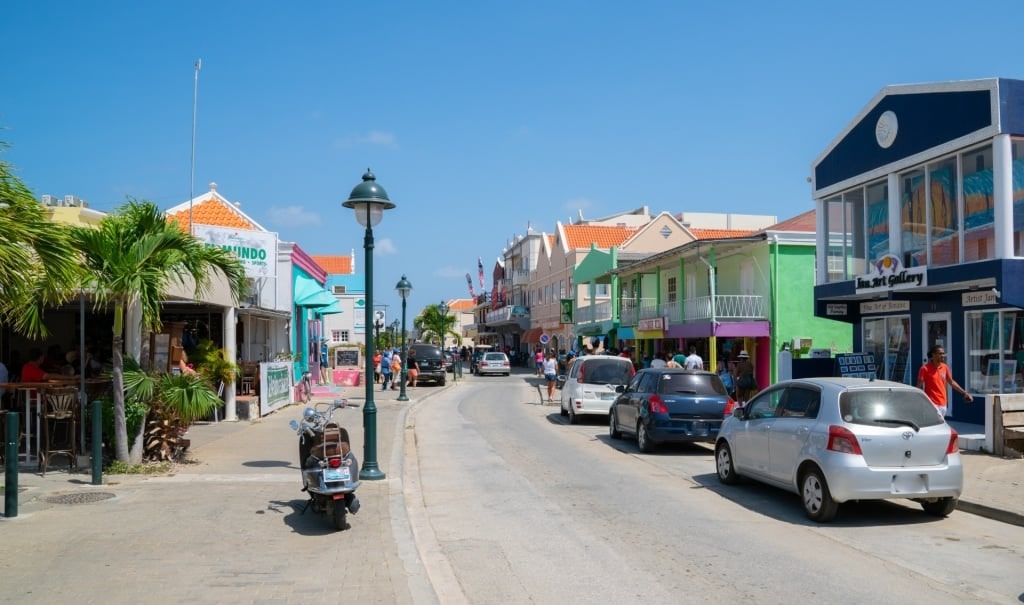
Kralendijk
Multicultural Bonaire was first inhabited by the Caiquetio, Arawak Indians who arrived from Venezuela around 1,000 years ago. Over the centuries, it’s changed hands between the Dutch, British, and Spanish.
The first Europeans arrived in 1499. Unimpressed by the desert-like landscape, they enslaved the islanders and took them to Hispaniola to work the plantations there.
Cattle were brought to Bonaire in 1526, and the island soon became a place for raising livestock, with some of the Caiquetio returning to tend the herds. In 1633, the Dutch claimed Aruba, Bonaire, and Curaçao, and Bonaire was developed with plantations. African slaves were imported to cultivate crops and harvest salt. Their tiny huts still stand by the salt pans, a reminder of this grim period in the island’s history.
The abolition of slavery in 1863 meant a 100-year pause in the salt industry, although it is thriving again today. But Bonaire’s principal income nowadays is from tourism, particularly eco-tourism and diving.
Wildlife & Nature
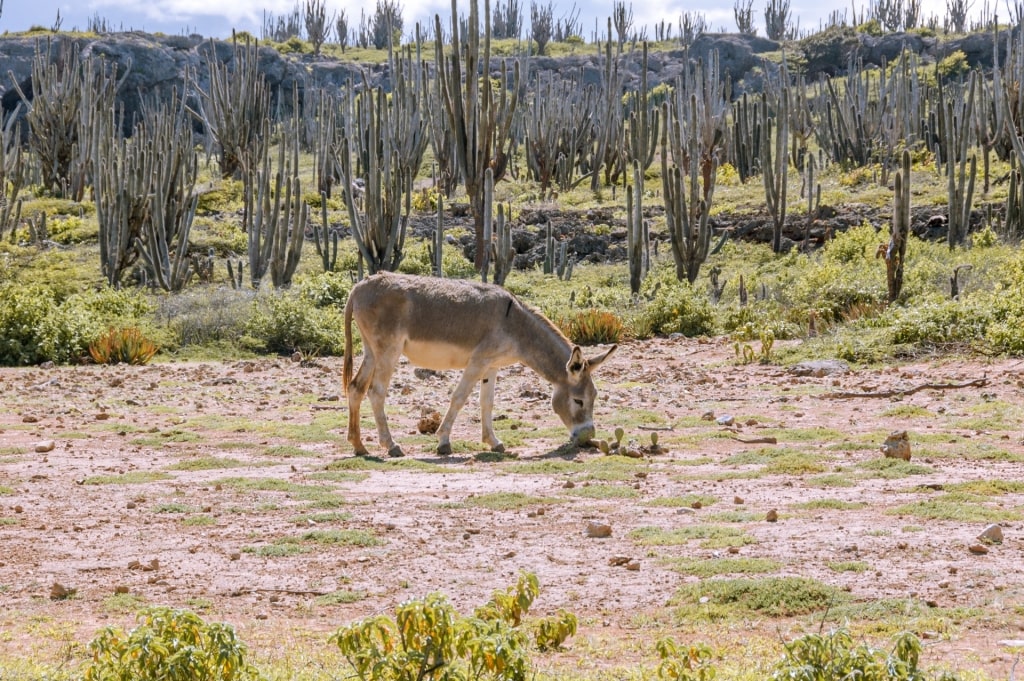
Donkey Sanctuary
Wildlife is protected all over this beautiful Caribbean island. The Washington-Slagbaai National Park takes up some 20 percent of Bonaire. It’s the best place to spot flamingoes, the island’s national symbol, feeding in the salt pans. You’ll see iguanas all over the island basking in the sunshine.
Visit the Echo Parrot Sanctuary to see the endangered yellow-throated Amazon parrot, a much-loved bird threatened with extinction. Bonaire also has a Donkey Sanctuary, offering a haven for hundreds of donkeys, many of them former working animals. Donkeys roam free, too, so be careful on the roads if you head out of Kralendijk.
Bonaire’s real claim to fame is the underwater world. Even if you only take a short snorkel trip, you could see turtles, eagle rays, squid, sea horses, and dozens of species of brilliantly colored tropical fish. You won’t have to stray far from Kralendijk to find spectacular snorkeling.
Tips for Visiting Kralendijk
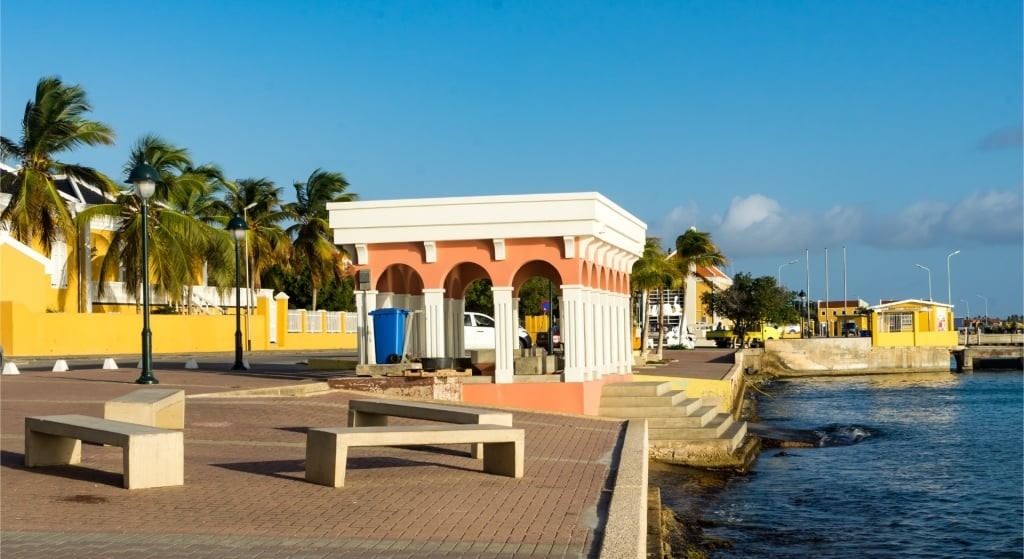
Kralendijk
The local language is Papiamento, but you’ll also hear Dutch, Spanish, and English spoken. The official currency of Bonaire is the U.S. dollar. Credit cards are widely accepted, but you may need to show a photo ID when using one.
Bonaire’s culture centers around the family, the church, and a long tradition of song and dance that stems from the days of slavery. There’s a busy social calendar of festivals and celebrations; attending one of these is the best way to immerse yourself in local culture.
The 85-plus dive and snorkel sites around the island are clearly marked with yellow-painted rocks. Check before heading out that any given site is open, as sometimes they’re closed to protect the underwater environment.
Pay careful attention to the rules of the marine park and note that if you want to dive or snorkel, you’ll need to buy a nature tag, either at the tourist office in Kralendijk or in any of the dive shops. The revenue from this project goes toward the conservation of the marine park.
Things to Do & Attractions in Kralendijk
Take a History Walk
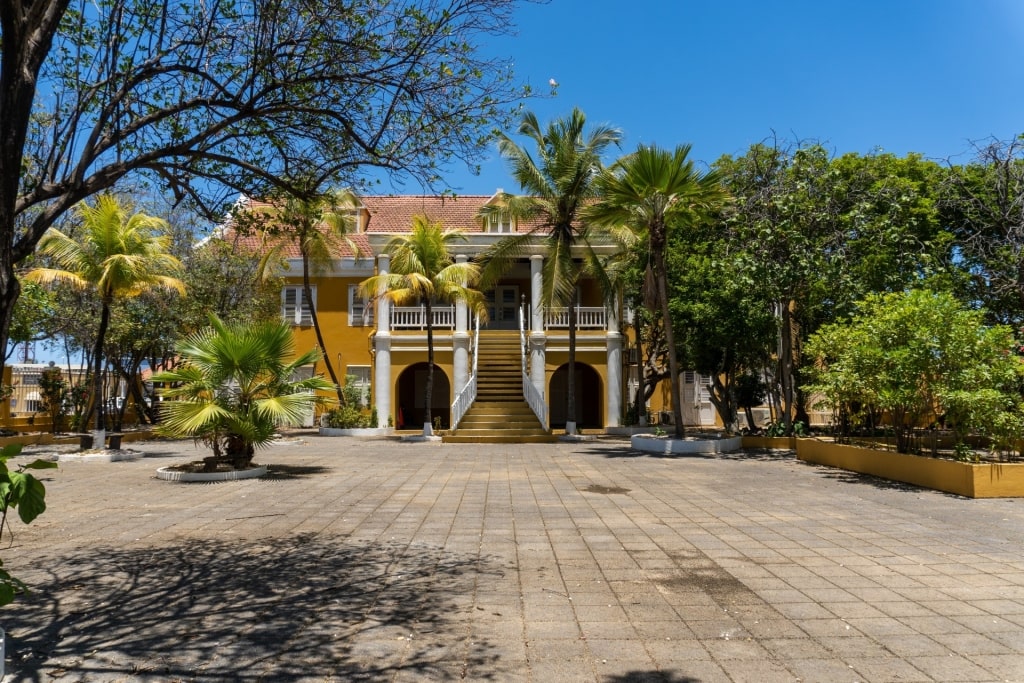
Fort Oranje
Kralendijk is dotted with fascinating historical sights, and you can pick up a Historical Kralendijk Walking Tour pamphlet at the tourist office.
The tour will take you to neoclassical Pasanggrahan, the Island Parliament House, built in 1890 as a private residence.
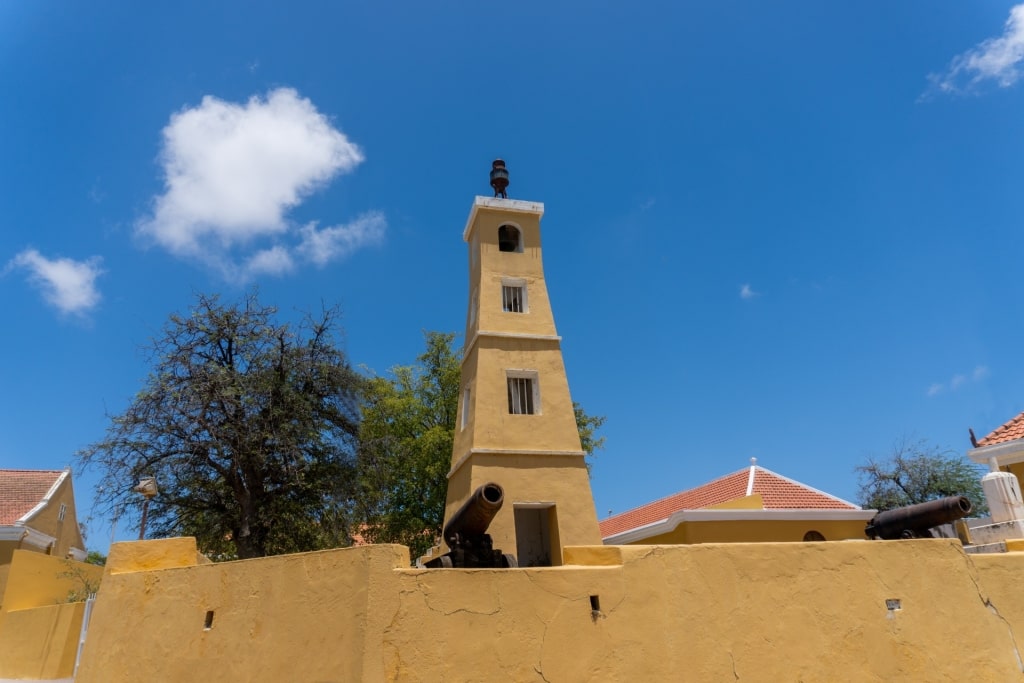
Fort Oranje
Fort Oranje was built in 1796 to protect the island, although it never saw any action. A wooden lighthouse was added in 1868, replaced by the stone tower you see today in 1932. The fort itself is now the island’s courthouse.
Bestuurskantoor, painted in Bonaire’s signature ochre and white, was built in 1937 as a home for the island’s governor. Today, it’s the principal government building.
Oranjeschool was the island’s first school, although the site is now occupied by the Cuba Compagnie restaurant. You’ll also see the Welcome Seat, a long, yellow and white painted bench built in 1923 where locals would traditionally sit and wait for the boat from Curaçao, bringing family and friends.
Read: Things to Do in Bonaire
Shop for Local Specialties
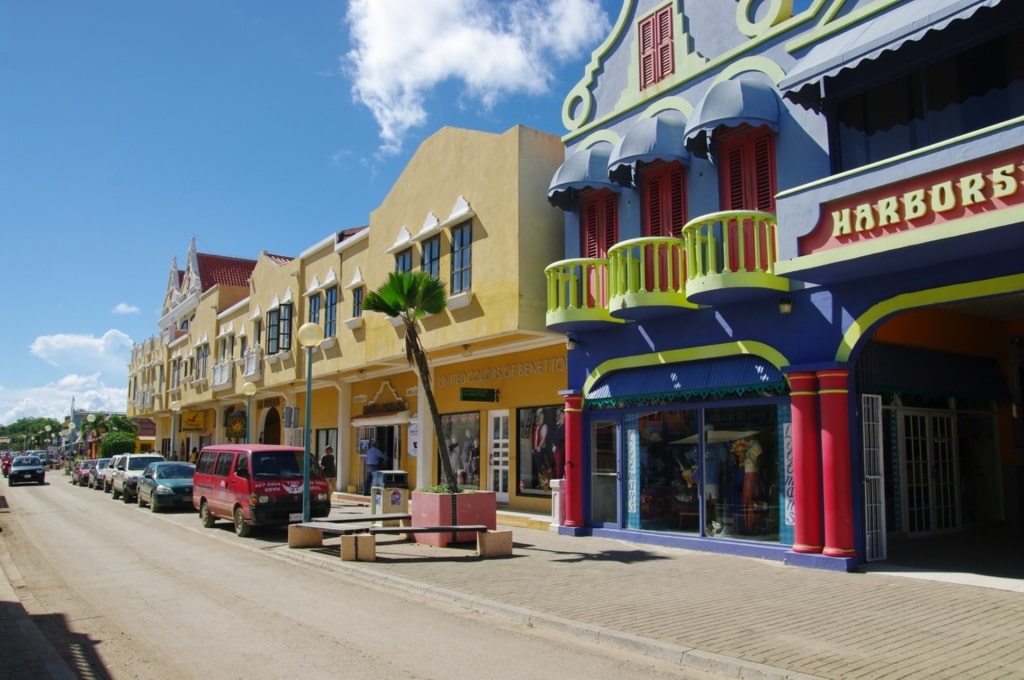
Kaya Grandi Photo by Bgabel on Wikimedia Commons, licensed under CC BY-SA 3.0
Kaya Grandi, Kralendijk’s main shopping street, is lined with dive shops, cafés, and arty souvenir shops. It’s a great place to wander if you’re looking for something locally made to take home. The street is highly photogenic thanks to the beautifully restored neoclassical buildings, all painted in bright colors, and the impressive street art.
Bonaire-themed items to buy as gifts include Cadushy products, a range of island-made liqueurs, herbal teas, and more unusually, cactus soup mixes. Locally owned MoltenWolf Glass, a block from Kaya Grandi on the waterfront, makes beautiful glass jewelry and homeware.
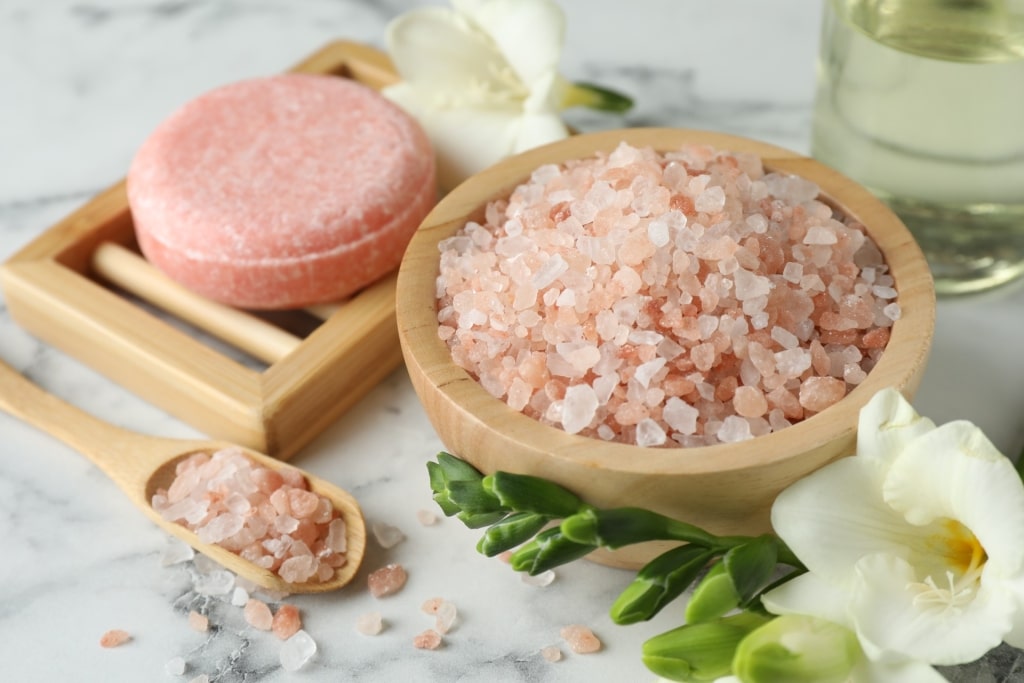
Salt bath products
Another special gift to take home is salt scrubs and salt bath products made with Bonaire salt and scented with aromatic oils. You’ll find these in shops all over the island. For a foodie souvenir, if you have space in your luggage, pick up a wheel of Dutch cheese.
If you’re in the market for art, head for Wilhelmina Park to buy art, prints, and jewelry from local artisans. Items often reflect island scenes and nature and are made from locally available products including driftwood and sea glass.
Explore the Underwater World
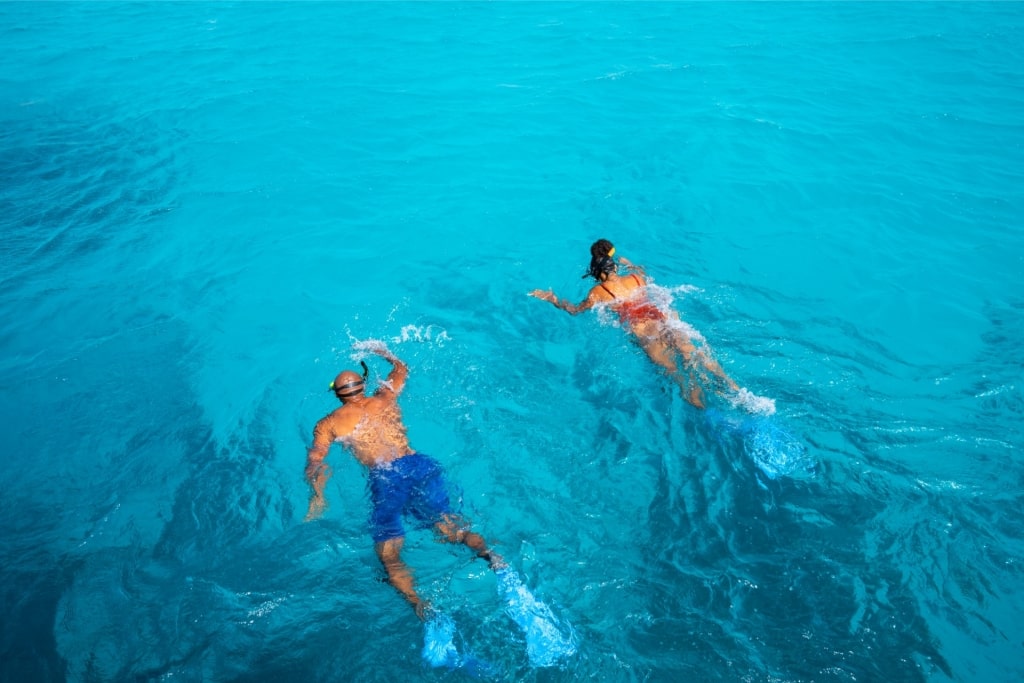
Snorkeling in Bonaire
Kralendijk lies on the more protected western side of the island, where all the best snorkel and dive sites in Bonaire are. There are several right in Kralendijk, at most a few minutes by taxi from downtown.
The best places to snorkel near the capital include Andrea I and Andrea II, a short taxi journey to the north of the town, where you can snorkel right off the beach. Expect to see brilliantly colored corals, anemones, tiny seahorses, if you’re lucky, and enormous parrotfish in shimmering colors, some specimens more than three feet long.
Windsock, near the airport, is a sandy beach with great snorkeling just offshore where you could spot turtles and rays.
If you’re a certified diver, or if you want to take a beginner course, there are dozens of dive schools around the island. There really is no better place to take the plunge thanks to the clear, shallow water and the astonishing diversity of marine life.
See the City From Seru Largu
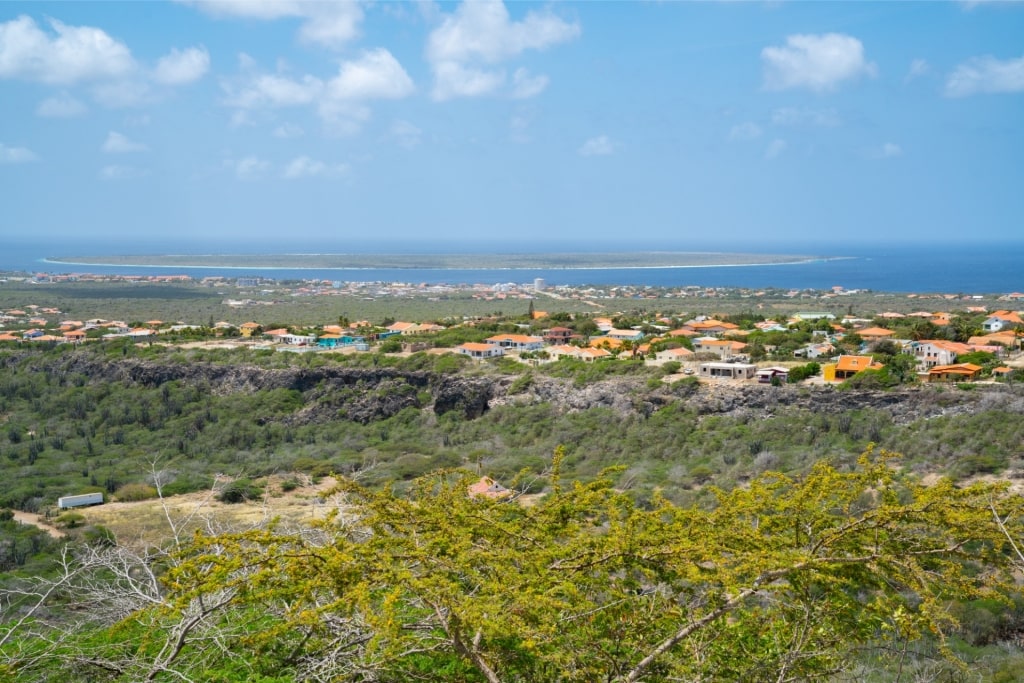
View from Seru Largu
Seru Largu means “large hill” in Papiamento, and this low-lying mountain, the fourth highest on the island, gives you wonderful views down over Kralendijk and Klein Bonaire beyond from the lofty heights of 400 feet.
The walk up takes you through fragrant sage bushes and Brasilia trees, with frequent wildlife sightings likely. Look out for basking iguanas, wild goats, and even donkeys, which roam free on the island.
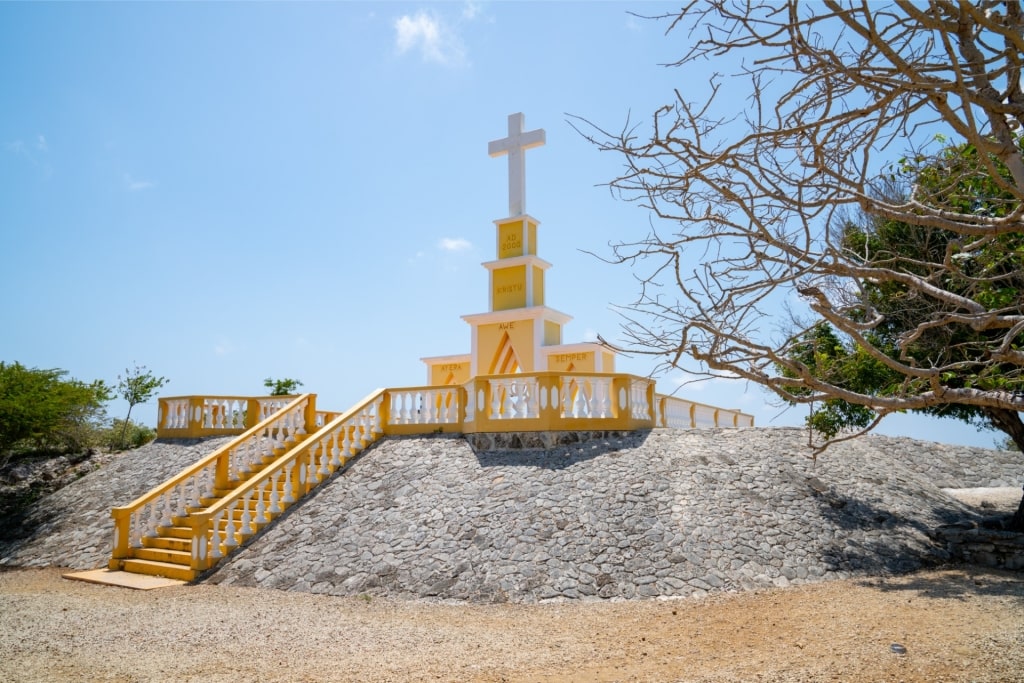
Millennium Monument
The hill is crowned by the rather grand Millennium Monument marked by a cross depicting the words, “Christ, Yesterday, Today and Forever” in Papiamentu.
Take a Trip to Klein Bonaire
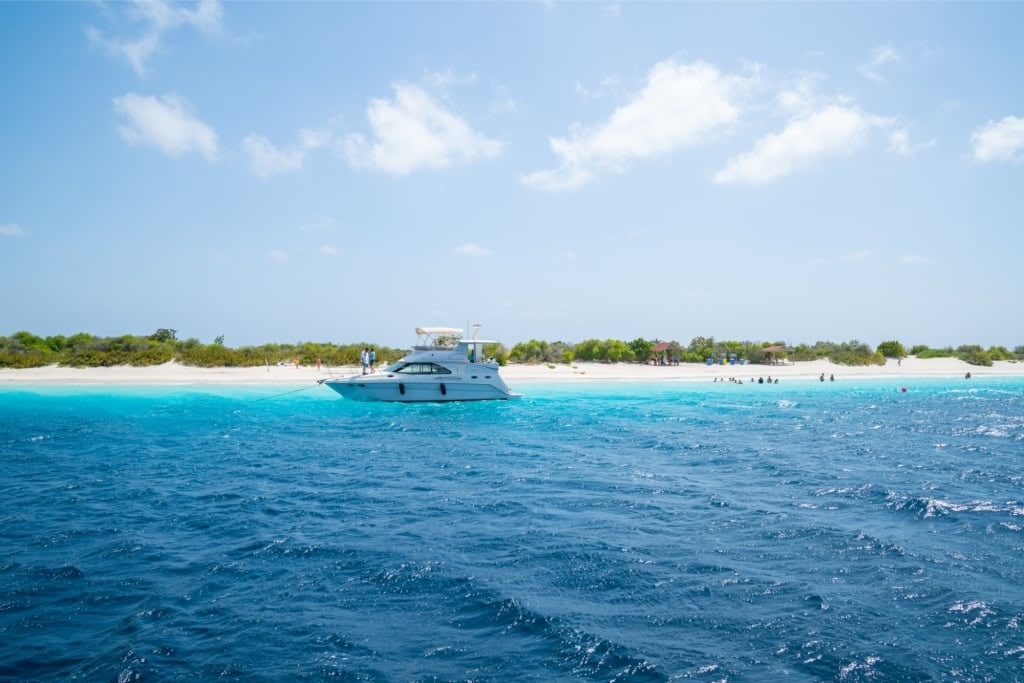
Klein Bonaire
Uninhabited Klein Bonaire, flat as a pancake and encircled by white sand beaches and spectacular reefs, is a wonderful day trip from Kralendijk. It’s only half a mile offshore; there’s even an annual swimming race to the island from Kralendijk.
Join an organized excursion on a catamaran or take a water taxi across. There are multiple dive sites, but some of the best snorkeling and sunbathing is on No Name Beach, which faces Kralendijk. This is the ultimate desert island dream: white sand backed by low-lying scrub, turquoise shallows, and spectacular Caribbean reefs. There are no facilities, which is part of the beach’s charm, so bring water and a picnic.
Visit the Oldest Restaurant on Bonaire
There’s been a restaurant on the site of Karel’s Beach Bar since 1940. Karel’s, which has been passed down through four generations, is the latest iteration, occupying a thatched overwater jetty with uninterrupted views across to Klein Bonaire.
Come here for brunch or lunch; the menu is international, leaning towards comfort food and seafood. The setting couldn’t be better; from your perch on the jetty, you can see fish circling in the water below.
Learn About History at the Terramar Museum
Kralendijk’s Terramar Museum provides a backdrop to the island’s history through archaeological exhibits and historical documents. The heart of the museum is a timeline of the entire Caribbean region, going back millennia, and provides a first-class history lesson in an entertaining, accessible way. There’s also a series of interactive displays about Bonaire itself.
The upper level of the museum is dedicated to the slavery era, telling poignant stories of this dark time in the Caribbean’s history.
Once you’ve taken in the exhibits, you’ll hopefully have a much better understanding of the places you visit around the island.
Swim & Sunbathe on Te Amo Beach
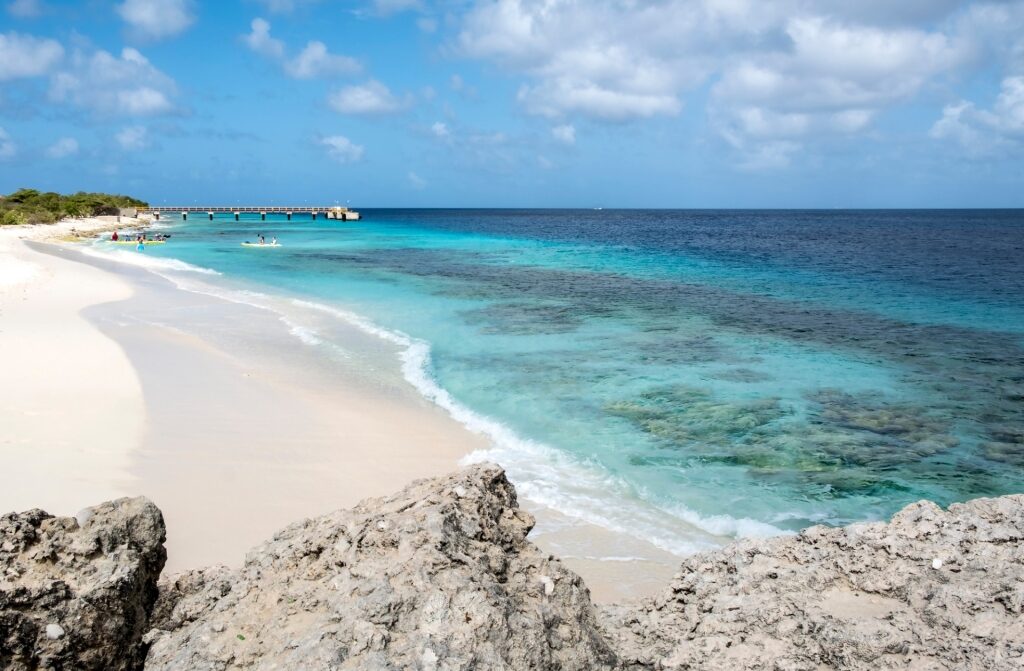
Te Amo Beach
You can’t go wrong with Bonaire’s beaches, as they’re generally composed of soft white sand, scrub or palm trees for shade, and spectacular snorkeling just offshore.
Te Amo Beach, near the airport, on the south side of Kralendijk, is as dreamy as Caribbean beaches get, with excellent snorkeling and the advantage of shady palm trees and the Kite City food truck. It’s one of the best and easiest beaches to reach from the capital city. You may see aircraft landing and taking off at close range, too, which is something of a thrill.
Food & Drink
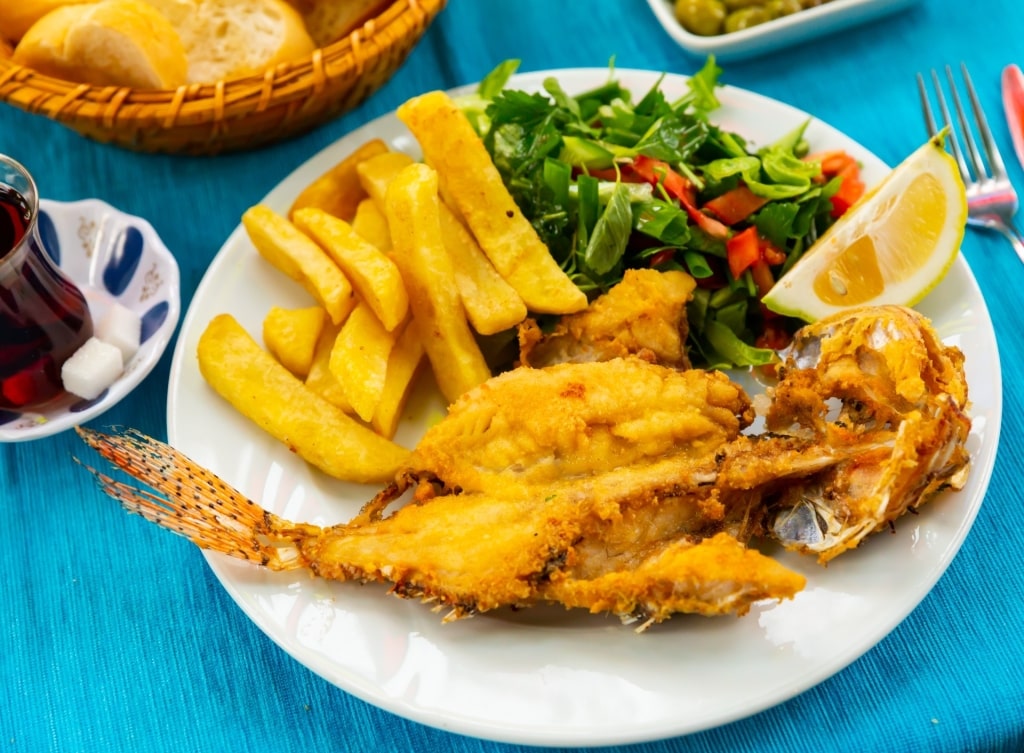
Lionfish
Bonaire has its own distinctive cuisine, with influences from the Caribbean, the Dutch, and the Spanish. You’ll find many restaurants in Kralendijk serving recipes containing goat, which is widely available on the island, and seafood.
As with other areas of the Caribbean, you’ll see lionfish on the menu. As this is an invasive species and also happens to be succulent and tasty, you can eat it with a clear conscience.
Most dishes come with funchi, which is similar to polenta, or the rice ‘n’ peas that you find all over the Caribbean, the peas being beans rather than green peas. Fried plantain is common, too.
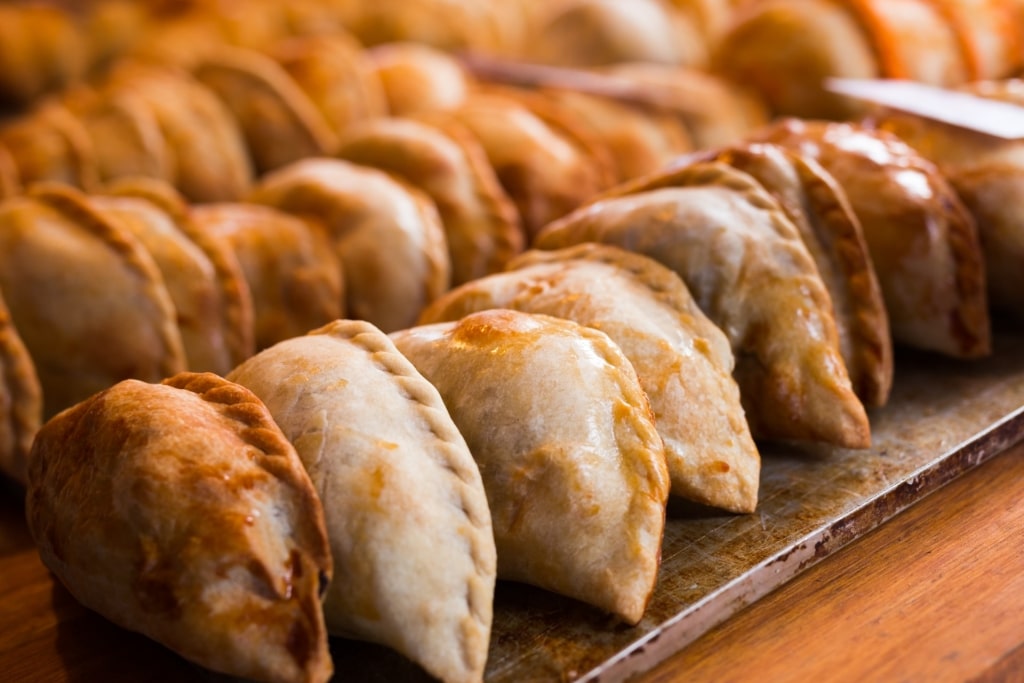
Pastechis
There are plenty of delicious things to try. Pastechis are like Spanish empanadas, little pastry parcels stuffed with meat, fish, or chicken. Guiambo is similar to gumbo, a rich stew of seafood and okra, while piska kiryoyo is a delicious Creole fish dish. The fish is spiced and grilled, served with tomato sauce and funchi or rice.
A stobá is a rich meat stew cooked very slowly. With kabritu, it’s goat meat, while baka is beef. Another meaty dish that’s an island classic is keshi yena, in which an Edam cheese is hollowed out, filled with meat, and baked, the cheese imparting its delicious gooey flavor and texture into the meat.
Finally, don’t miss the local spirit, Tekibon, made from the distilled yatu cactus and not unlike tequila in flavor.
Best Time to Visit

Bonaire
The best time to go to Bonaire is between mid-January and late May, when the weather is warm and sunny. The ABC islands, of which Bonaire is the “B”, lie outside the hurricane belt, so there is less chance of being caught by a storm in the hurricane season from June to November.
You may experience short, sharp showers in November, but essentially, it’s a year-round destination.
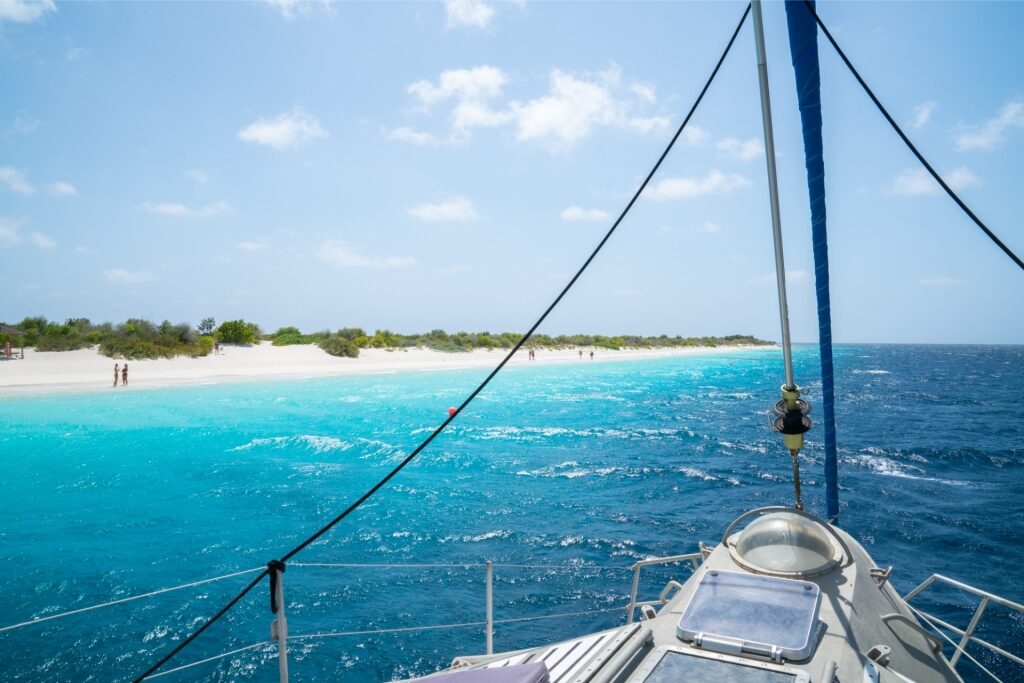
Klein Bonaire
Are you inspired to discover the culture and beaches of Kralendijk? Browse our Bonaire cruises and plan your dream Caribbean getaway.



